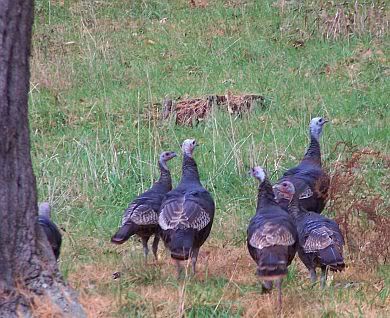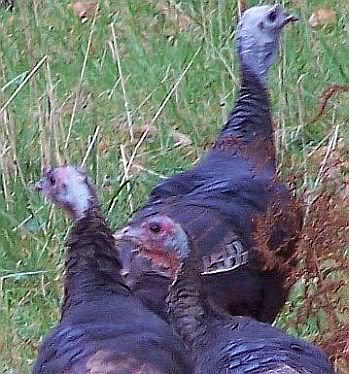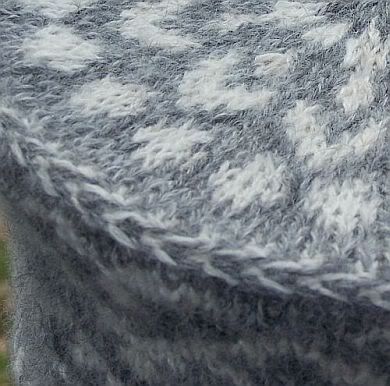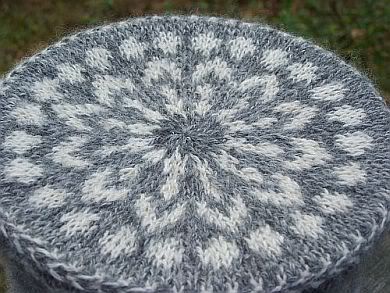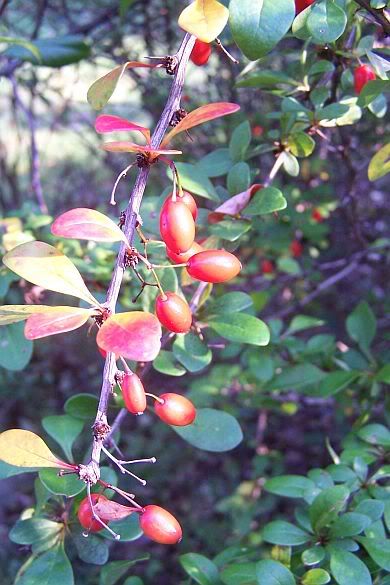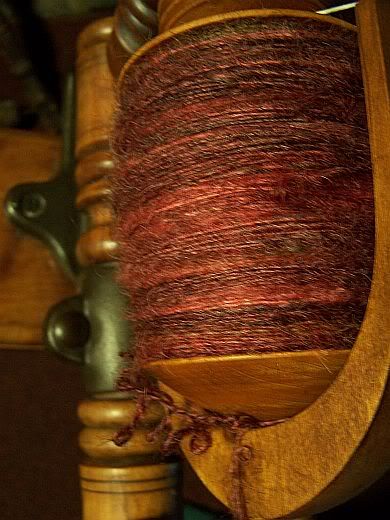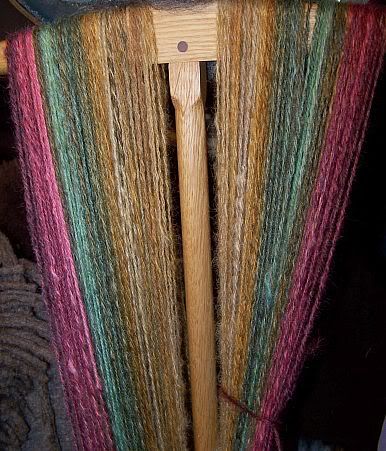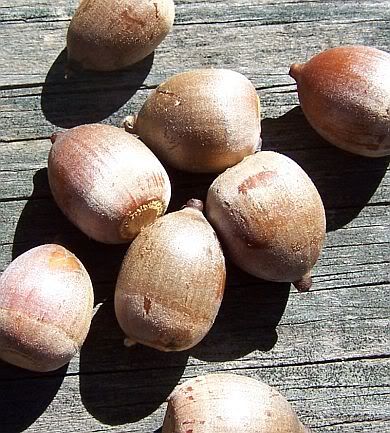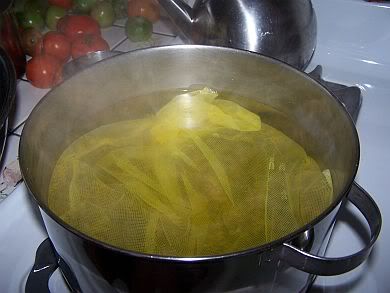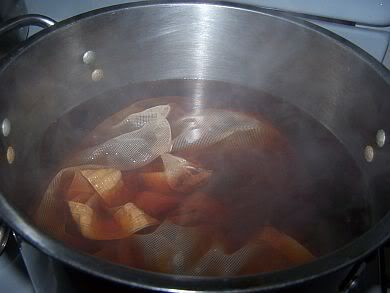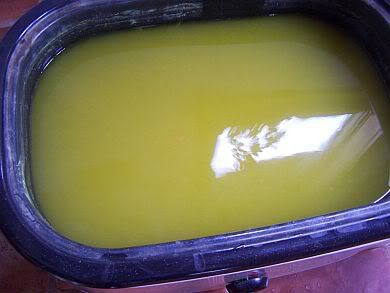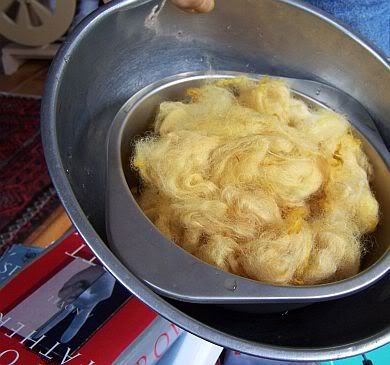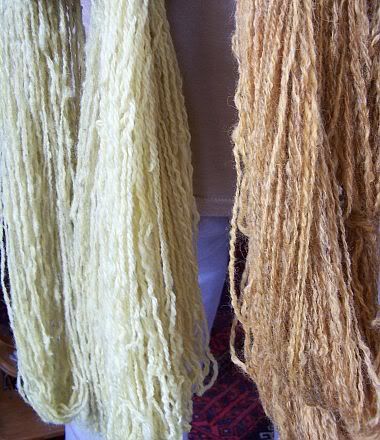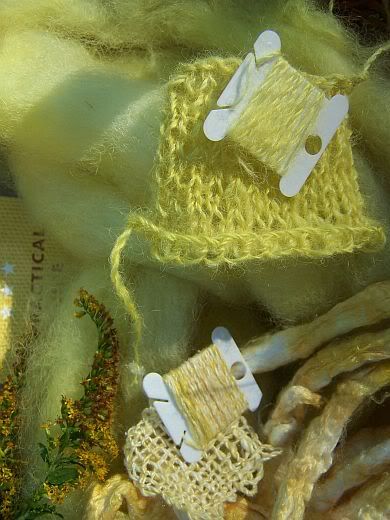2nd goldenrod blooming
3rd barberry berries
15th turkeys parade
18th pine needles drop
19th deer ticks spotted
30th ten inches snow!
Monday, October 31, 2011
phenological events October 2011
Tuesday, October 25, 2011
turkeys and toque

The turkeys show up each morning for coffee. They are hard to photograph because they are wary. I try to open the door latch without a sound, but they always notice.
This is a small rafter of turkeys..maybe they are considered a colevey, or a gobble of turkeys. I have seen flocks that are much larger. In past years, their numbers have exceeded 20 and 30 at a time. I've heard stories of nets being launched out of cannons, to capture and relocate them. They can devastate the undergrowth of a forest floor, eating the new growth. I didn't notice these turkeys as summer pullets.
Most of them seem to be males, though I didn't notice any beards hanging down, I saw the colors on their almost featherless heads changing from blue to red. I've often wondered about this...and what causes it. Hens usually have more of a gray blue head, and certainly more feathers that act as camouflage. Hens and Toms both have snoods. Snoods are the fleshy comb like growths that dangle down around their beaks, or bills. The snoods on these turkeys are still small, so maybe they are this years pullets.
I have finished another commission for Finca Alta Vista. This is a Toque hat, based on a design by Anna Zilboorg. I worked it up from two strands each of handspun alpaca (Allspice and Violette).
While I was knitting the strands, I worked from the inside and outside of two center pull balls. The Herringbone Braid called for a tricky maneuver now and then to keep the yarn from tangling on itself. No worries, I stopped knitting occasionally and held the work in the air to allow the balls of yarn to unspiral. I found that technique to be amusing.
Finally, I had taken the project with me to a spin day afternoon, and made a mistake in the decreases. I wound up letting it sit in my project bag for several weeks before I was in the right frame of mind to "tink" (or knit backwards) and discover the mistake. Thankful for stitch markers, there.
Once the mistake was corrected, the decreases fell into place and the crown was finished.
While surfing the internet the other night, I stumbled on a quotation. I managed to copy the quote before crashing..but I don't know where I found it. It describes how I feel about creating things in my mind as I go about daily chores and responsibilities, whilst I dream textile thoughts...other things I want to be working on.
“You know, I embroider my blouses with two heads. During the night, one of my heads dreams of designs, drawings, colors, and stitches and during the day my other head thinks of all the other things that a woman does: watering the animals, cooking, making tortillas, and besides all that, embroidering the blouse that I was dreaming of. One head is for me and the other is for my people.”
Nahua woman, Manuela El Tectil Mexicano, Linea y Color
Thursday, October 20, 2011
got friends got gotland
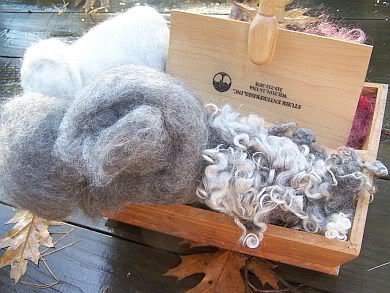
A few months ago, my virtual friend, Catena Cathy, sent me a small package of a sampling of Gotland locks that she had been working with...a surprise in my postoffice box! They came from Riverbend Gotlands and were the first sample of Gotland locks that my hands had ever touched. With SO many different breeds of sheep in the world, it is always a thrill for me to sample something I can add to my breed notebook.
Hailing from the Swedish Island of Gotland in the Baltic Sea, the Gotland breed (through artificial insemination) have been in the United States since 2003. I feel fortunate to have the chance to work with the samples. You may have noticed that the locks were from New Jersey and arrived by way of Colorado...pay no attention to that..suffice it to say that Catena has "ulterior designs" and I am more than happy to acquiesce.
Soon after I started to work with the locks, another virtual friend, gypsyspinner Jody, was kind enough to send me a sample of the Gotland Blend batts that she is working up with the fiber from Hubbertfarms. The samples are of special interest to me since I work with a good deal of Alpaca, and Jody has been working up her own blends of Gotland and Alpaca. Jody sent a note that explained that the batts had been hand prepared and the the Gotlands were 75% with the balance of Finn or Shetland..(other favorites of mine!)
Here is a close up photo of the basket I'm currently working with, it contains the steel gray, lustrous, full of curl and energy, soft and silky locks and beautifully prepared, ready to pick up and spin batts.
I got friends. I got gotland. I iz a happy spinster.
So ...at some point in time.. at a Hatton Friday-dyeday..I took handfuls of my locks and tossed them into different dyepots. I wasn't sure what I was going to do with them..just wanted to experiment.
Over the last few weeks, I've been hand carding the dyed locks and spinning out the color. Such a pleasure to work with! I have been spinning long draw, letting some of the curls fluff out, making an irregular soft yarn, which I finally decided to Navajo or chain ply. I was doubtful that my singles had enough integrity to stand on their own, and I wanted to preserve the color runs...so the chain ply seemed like the right choice.
After that, I wound off onto the niddy-noddy and skeined almost 120 yards of a 3ply woolen yarn with 8-10 wpi...that I soused and thwacked to within an inch of its life.
I intend to spin up the remainder of the grey roving and locks that are still in the basket, so that I might have enough to do a color-work hat.
Many thanks, Cathy and Jody! I only wish we could meet IRL--but I am enjoying working with both of you through the blogosphere...for now...anyway...until the time comes that we can sit down and spin together..somewhere!
Saturday, October 08, 2011
prediction confliction
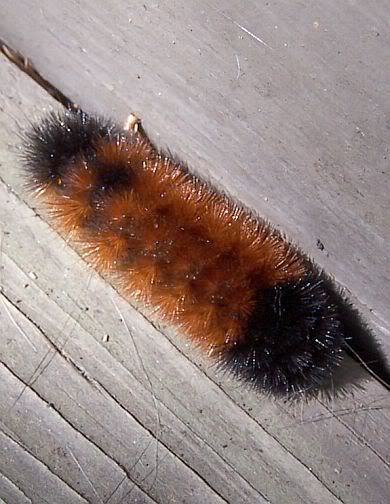
It would seem that this woolly bear caterpillar is predicting a mild winter. "According to legend, the wider that the middle brown section is (or, the more brown segments there are), the milder the coming winter will be"
...but then...what about ALL THESE ACORNs that keep falling? ..Legend has it that if there is an abundance of acorns to harvest, it predicts a harsh winter. hum...I believe we have a prediction confliction at hand.
This Hickory Tussock moth caterpillar seems unaffected. What ever will be will be.
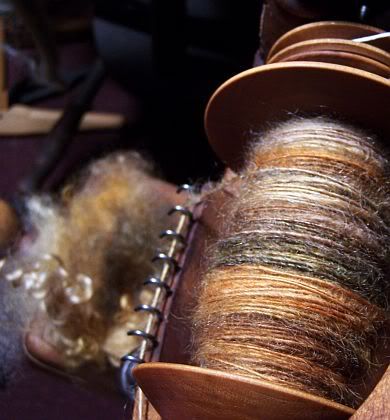 And I am spinning an autumn colorway...this is hand-dyed (jacquard acid dyes) Gotland locks..hand carded...spun long draw on the Canadian Production Wheel...
And I am spinning an autumn colorway...this is hand-dyed (jacquard acid dyes) Gotland locks..hand carded...spun long draw on the Canadian Production Wheel...
For those that keep track...here is the riverrim woolly bear in 2006...and here is another one from 2008 ...they are always fun to find!
Monday, October 03, 2011
solidago dye day
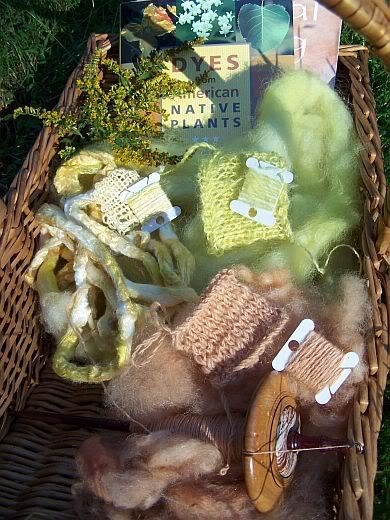
On Friday, we continued our natural dye experiments in Grace's kitchen.
There were four of us that shared the pots. We worked with onion skins and goldenrod with an alum mordant. We used different (breed) wool, cotton and silk for our fibers.
Several species of Solidago (goldenrod) may be used for natural dyes. My husband collected the plants for me, and I didn't take the time to identify them. There were a few round areas on the stems of some of the plants, which I recognize to be galls. These are made by a tiny fly that lays its eggs inside the stem of the plant. Folklore tells of people carrying these galls in their pockets to keep the rheumatism at bay...so I slipped a few in my pocket...just because.
Some recipes call specifically for only flowers to be used. There are also some recipes that call for the roots or leaves, depending on what color you wish to extract from the plant. In the interest of time, I simply cut the tops off the flowers. I did not crush or bruise the flowers, but stuffed them into the homemade "teabags" that Grace had put together, and set them in the turkey roaster with enough water to cover.
At one point, we took the remains of a previous dyepot, and the alum premordant bath, and dumped it into the turkey roaster. You may be thinking that we didn't follow the recipe very carefully, and you would be correct.
Some of the fun that comes out of dye day is "winging it". It is OK to wing it, as long as you don't ever expect to duplicate your results. Since natural dyes seem to vary from one year to the next (depending on the growing season) I don't expect to duplicate the results. There are some things that it is important to take into consideration...for instance the ratio between wool and alum. If you use too much alum, you wind up with "sticky" wool. I do enjoy color, but not at the expense of loosing the handle of the fiber.
Some of us double-dipped. ..or a goldenrod base with an over-dye of onion skins. I had premordanted (is that a word?) my wool and silk the day before. The wool I was using, Miss Ewenice, came from my TDF prize.
I warp-chained the roving and my silk, so that some areas would not absorb as much color as other areas. The wool and the silk were stuffed into panty-hose bags, so they would be full of bits of onion skins or goldenrod flowers.
The results, while similar, were unique. The most fun of dye day is seeing what comes out of the pot...depending on how long you let it simmer...or what you started with...those subtle nuances are always fun to see and make note of.
Making notes of results and testing samples are also part of the experiment for me.
I had to wait a few days for my wool and silk to dry before I could work with them...my fingers twitched to spin and knit up some samples to see what the yarn would look like, how it would behave etc.
The notes will be tucked away, along with ideas for intended projects to be made from the yarn. Work for another day....
For now...the results are sitting in my basket, for me to glance at as I walk past on my way to do other chores...
...a nice memory of an afternoon spent with friends and fiber.

